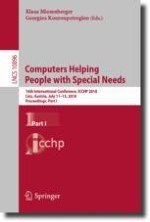2018 | OriginalPaper | Chapter
Automated vs Human Recognition of Emotional Facial Expressions of High-Functioning Children with Autism in a Diagnostic-Technological Context: Explorations via a Bottom-Up Approach
Authors : Miklos Gyori, Zsófia Borsos, Krisztina Stefanik, Zoltán Jakab, Fanni Varga, Judit Csákvári
Published in: Computers Helping People with Special Needs
Publisher: Springer International Publishing
Activate our intelligent search to find suitable subject content or patents.
Select sections of text to find matching patents with Artificial Intelligence. powered by
Select sections of text to find additional relevant content using AI-assisted search. powered by
